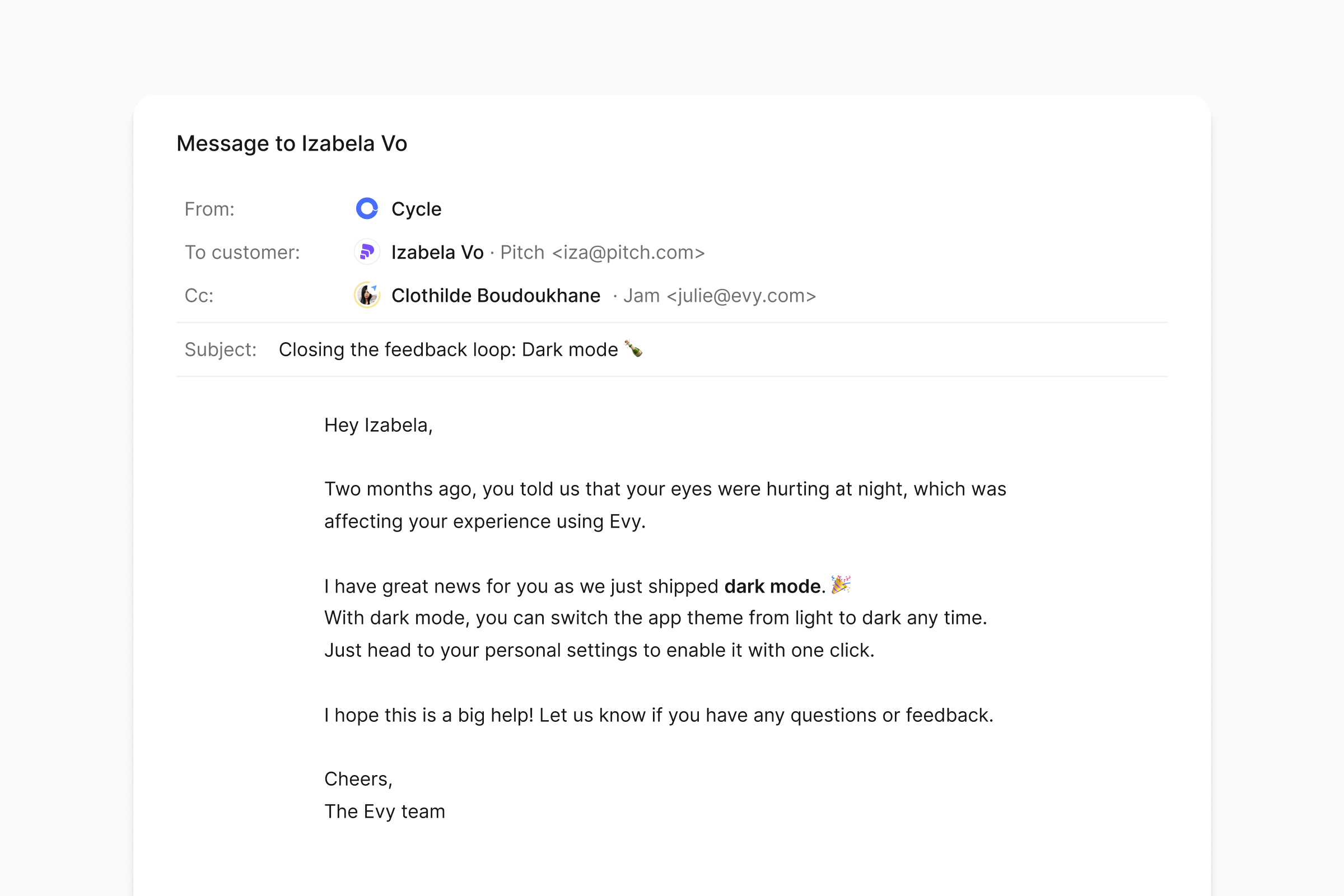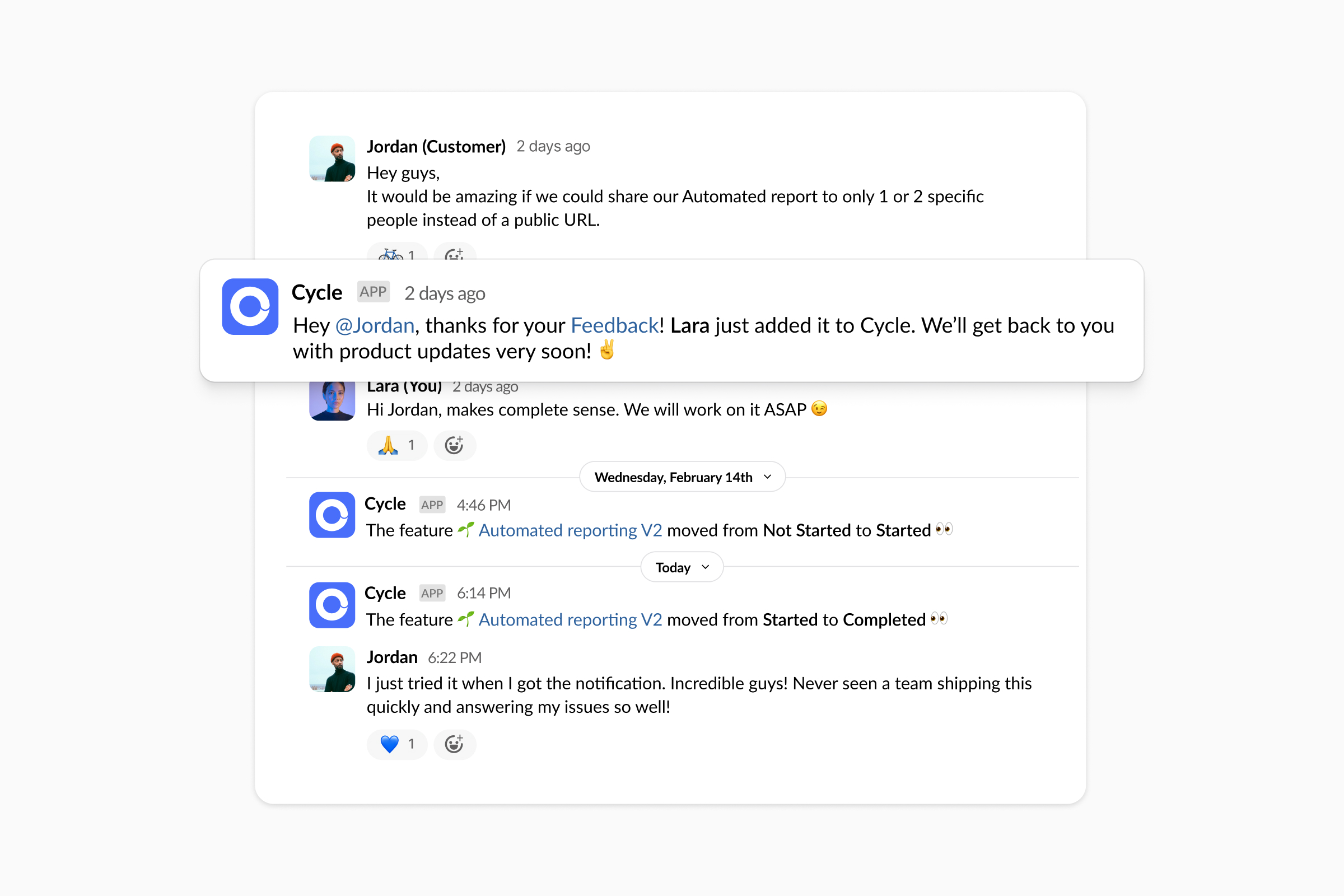It’s Not Feedback If It Doesn’t Loop
Most Teams Capture Feedback. Few Close the Loop.
Every product team talks about feedback.
We put forms in the app. We run NPS surveys. We log every support ticket and sales call. We tag Slack messages, spin up dashboards, build Notion tables. We tell ourselves we’re “listening.” But let’s be honest: capturing feedback is the easy part.
The hard part is what happens next. Or rather, what doesn’t.
Because most teams don’t actually close the loop. Not with customers. Not with their own go-to-market teams. And when the loop doesn’t close, trust breaks. Slowly, invisibly, but decisively.
And once trust breaks, your feedback system stops working altogether.
Feedback Is a Gift. But It Has an Expiration Date.
When someone shares feedback – whether it’s a customer using your product or a CSM on a tricky renewal – they’re doing something valuable. They’re taking the time to tell you how to make your product better. That’s a gift. And like any gift, it comes with the hope of acknowledgment.
But in most orgs, that acknowledgment never comes. The feedback goes into a system, but not back into the relationship. Maybe the team uses it. Maybe not. Maybe the feature ships. Maybe not. But the person who raised it never hears back.
And over time, they stop raising it.
That’s the moment the system starts to fail – not because of a lack of data, but because of a lack of trust. Feedback only works when it flows in both directions. That’s what a loop is. Not just input, but return.
Closing the Loop Turns Users Into Co-Creators
When you close that loop – even with a simple message like “Hey, we shipped this because of your input. Thought you’d want to know.” – you change the dynamic. You shift the conversation from collection to collaboration. Customers stop feeling like outsiders and start feeling like co-creators. They lean in. They root for you. They give better feedback next time. Not because of a form – but because they know it matters.
This is how trust compounds.

The Loop That Breaks First Is Internal
But here’s what most people miss: the most broken loop isn’t with your users. It’s with your own team.
In B2B, the real feedback engine is internal. It’s the GTM teams – Support, Success, Sales – who are talking to customers all day long. They’re the ones who hear the objections, the pain points, the low-key insights that don’t show up in analytics. They’re your frontline radar. And they want to help. But if every time they share feedback, it disappears into a black box? They’ll stop.
And when they stop, you lose more than insight. You lose alignment. You lose momentum. You create silos between teams who are supposed to be on the same side.
Internal Loops Build Revenue, Not Just Roadmaps
This is one of the most under-discussed truths in product: internal feedback loops are more important than external ones. Because when your own team doesn’t trust the process, nothing flows. Not ideas, not collaboration, not energy. And when it does work – when GTM teams get visibility into what’s shipping, when they feel heard, when they can go back to a customer and say “we fixed that!” – everything changes. They become champions. Deals re-open. Accounts renew. Everyone feels a little more optimistic.
This is why feedback loops matter. Not just because they make the product better. But because they make the whole company better.
A Broken Loop Is a Broken System
And yet, most teams still treat feedback like it’s a backlog ticket or a voting board. Capture it. Count it. Move on. But feedback isn’t a data point. It’s a relationship. And like all relationships, it breaks when communication breaks. If the loop doesn’t close, the trust doesn’t grow. And if the trust doesn’t grow, neither does your product.
So let’s say it clearly: it's not okay to capture feedback without a loop. Not anymore. Not in 2025. Not if we care about building companies that actually listen and improve.
We need to shift from “feedback tools” to “feedback systems.” From collection to closure. From intake to impact.

Why We Built Cycle
That’s why we built Cycle. Not just to capture feedback from a dozen sources, but to make sure it gets turned into something real. Structured, shared, linked to what you're building – and most importantly, looped back to the people who gave it. Whether that’s a customer, a sales rep, or your favorite support lead. Because the moment you close that loop, something powerful happens. People trust you more. They engage more. And your product gets better – not just because you ship faster, but because you ship with people, not just for them.
Cycle is the platform that lets you build that trust. Internally. Externally. At scale. Not just feedback. A real feedback loop.
This Is the Moment to Fix It
We’re long past the point where closing the feedback loop is a “nice to have.” It’s no longer just a best practice – it’s the foundation of trust. Between product and customer. Between teams inside your company. Between what you say you value and what you actually prioritize.
When feedback flows, companies learn faster, ship smarter, and grow stronger. When it stalls, everything slows. And when it dies, so does the connection to the people you’re building for.
So here’s the invitation: don’t just capture feedback. Commit to it. Build systems that loop it back. Make it visible. Make it felt. Make it real.
Because trust is a loop. And once you close it, everything changes.

